
-
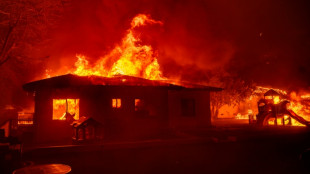 Economic losses from natural disasters down by a third in 2025: Swiss Re
Economic losses from natural disasters down by a third in 2025: Swiss Re
-
Indonesians reeling from flood devastation plea for global help

-
 Timeline: How the Bondi Beach mass shooting unfolded
Timeline: How the Bondi Beach mass shooting unfolded
-
On the campaign trail in a tug-of-war Myanmar town

-
 Bondi Beach suspect visited Philippines on Indian passport
Bondi Beach suspect visited Philippines on Indian passport
-
Kenyan girls still afflicted by genital mutilation years after ban

-
 Djokovic to warm up for Australian Open in Adelaide
Djokovic to warm up for Australian Open in Adelaide
-
Man bailed for fire protest on track at Hong Kong's richest horse race

-
 Men's ATP tennis to apply extreme heat rule from 2026
Men's ATP tennis to apply extreme heat rule from 2026
-
Cunningham leads Pistons past Celtics, Nuggets outlast Rockets

-
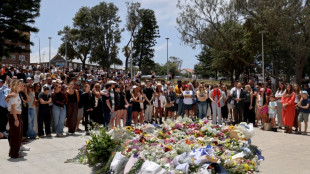 10-year-old girl, Holocaust survivors among Bondi Beach dead
10-year-old girl, Holocaust survivors among Bondi Beach dead
-
Steelers edge towards NFL playoffs as Dolphins eliminated

-
 Australian PM says 'Islamic State ideology' drove Bondi Beach gunmen
Australian PM says 'Islamic State ideology' drove Bondi Beach gunmen
-
Canada plow-maker can't clear path through Trump tariffs
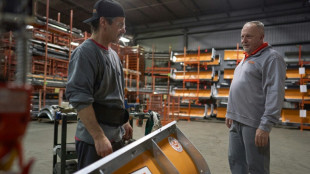
-
 Bank of Japan expected to hike rates to 30-year high
Bank of Japan expected to hike rates to 30-year high
-
Cunningham leads Pistons past Celtics

-
 Stokes tells England to 'show a bit of dog' in must-win Adelaide Test
Stokes tells England to 'show a bit of dog' in must-win Adelaide Test
-
EU to unveil plan to tackle housing crisis

-
 EU set to scrap 2035 combustion-engine ban in car industry boost
EU set to scrap 2035 combustion-engine ban in car industry boost
-
Australian PM visits Bondi Beach hero in hospital

-
 'Easiest scam in the world': Musicians sound alarm over AI impersonators
'Easiest scam in the world': Musicians sound alarm over AI impersonators
-
'Waiting to die': the dirty business of recycling in Vietnam

-
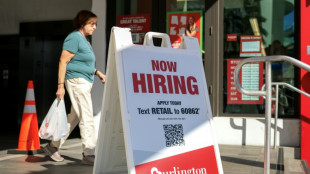 Asian markets retreat ahead of US jobs as tech worries weigh
Asian markets retreat ahead of US jobs as tech worries weigh
-
Security beefed up for Ashes Adelaide Test after Bondi shooting

-
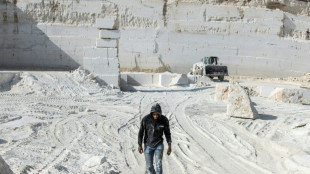 Famed Jerusalem stone still sells despite West Bank economic woes
Famed Jerusalem stone still sells despite West Bank economic woes
-
Trump sues BBC for $10 billion over documentary speech edit

-
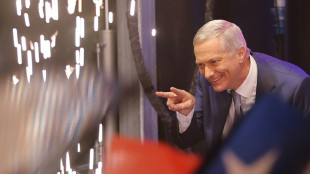 Chile follows Latin American neighbors in lurching right
Chile follows Latin American neighbors in lurching right
-
Will OpenAI be the next tech giant or next Netscape?

-
 Khawaja left out as Australia's Cummins, Lyon back for 3rd Ashes Test
Khawaja left out as Australia's Cummins, Lyon back for 3rd Ashes Test
-
Australia PM says 'Islamic State ideology' drove Bondi Beach shooters

-
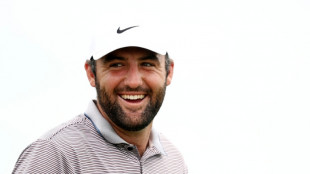 Scheffler wins fourth straight PGA Tour Player of the Year
Scheffler wins fourth straight PGA Tour Player of the Year
-
Nano One Receives C$10.9M from Financing and Government Programs

-
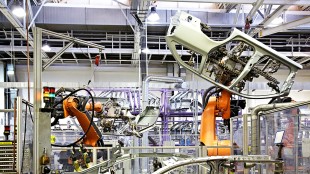 WelcomeVille Investment Association With Leadership From Reginald Pembroke Rolls Out a Digital Collaboration Platform
WelcomeVille Investment Association With Leadership From Reginald Pembroke Rolls Out a Digital Collaboration Platform
-
Grande Portage Reports Advancements of Transportation Infrastructure at the New Amalga Gold Project

-
 Genflow Completes Dosing Phase of Canine Gene Therapy Trial
Genflow Completes Dosing Phase of Canine Gene Therapy Trial
-
President Trump Cleaning Up Biden's Marijuana Mess - MMJ Preparing to Move FDA Huntington's Cannabis Trials Forward

-
 Security beefed up for Ashes Test after Bondi shooting
Security beefed up for Ashes Test after Bondi shooting
-
Wembanyama blocking Knicks path in NBA Cup final

-
 Amorim seeks clinical Man Utd after 'crazy' Bournemouth clash
Amorim seeks clinical Man Utd after 'crazy' Bournemouth clash
-
Man Utd blow lead three times in 4-4 Bournemouth thriller

-
 Stokes calls on England to 'show a bit of dog' in must-win Adelaide Test
Stokes calls on England to 'show a bit of dog' in must-win Adelaide Test
-
Trump 'considering' push to reclassify marijuana as less dangerous

-
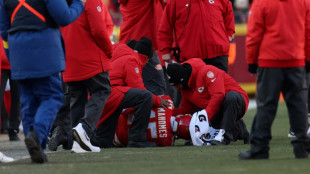 Chiefs coach Reid backing Mahomes recovery after knee injury
Chiefs coach Reid backing Mahomes recovery after knee injury
-
Trump says Ukraine deal close, Europe proposes peace force

-
 French minister urges angry farmers to trust cow culls, vaccines
French minister urges angry farmers to trust cow culls, vaccines
-
Angelina Jolie reveals mastectomy scars in Time France magazine

-
 Paris Olympics, Paralympics 'net cost' drops to 2.8bn euros: think tank
Paris Olympics, Paralympics 'net cost' drops to 2.8bn euros: think tank
-
Chile president-elect dials down right-wing rhetoric, vows unity

-
 Five Rob Reiner films that rocked, romanced and riveted
Five Rob Reiner films that rocked, romanced and riveted
-
Rob Reiner: Hollywood giant and political activist
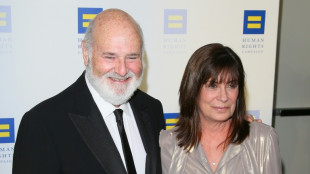

Inside the 'golden age' of alien hunting at the Green Bank Telescope
Nestled between mountains in a secluded corner of West Virginia, a giant awakens: the Green Bank Telescope begins its nightly vigil, scanning the cosmos for secrets.
If intelligent life exists beyond Earth, there's a good chance the teams analyzing the data from the world's largest, fully steerable radio astronomy facility will be the first to know.
"People have been asking themselves the question, 'Are we alone in the universe?' ever since they first gazed up at the night sky and wondered if there were other worlds out there," says Steve Croft, project scientist for the Breakthrough Listen initiative.
For the past decade, this groundbreaking scientific endeavor has partnered with a pioneering, US government-funded site built in the 1950s to search for "technosignatures" -- traces of technology that originate far beyond our own solar system.
The search for extraterrestrial intelligence, or "SETI," was long dismissed as the realm of eccentrics and was even cut off from federal funding by Congress thirty years ago.
But today, the field is experiencing a renaissance and seeing an influx of graduates, bolstered by advances in artificial intelligence and machine learning, as well as recent discoveries showing that nearly every star in the night sky hosts planets, many of which are Earth-like.
"It feels to me like this is something of a golden age," says Croft, an Oxford-trained radio astronomer who began his career studying astrophysical phenomena, from supermassive black holes to the emissions of exploding stars.
- Is ET calling? -
The story of the "National Radio Quiet Zone" dates back to 1958, when the US federal government designated a region in West Virginia to help astronomers shield their sensitive equipment from interference.
This means no radio signals, no cellphone coverage, and limited WiFi for the surrounding community. Even the vehicles transporting staff to and from the telescope must run on diesel, as gas cars' spark plugs generate electrical interference.
"I think the community takes a certain pride in having a premier scientific facility right here," says Paul Vosteen, who has worked at the observatory for the past eight years.
Standing on the highest platform of the 100-meter giant dish, Vosteen gestures toward the Allegheny Mountains, which act as a natural barrier for radio signals in this bowl-shaped valley.
Radio astronomy began by happy accident when American physicist Karl Jansky discovered radio waves coming from the center of our galaxy, the Milky Way, in 1933.
Since then, it has allowed astronomers to peer beyond the planets, stars, and dust visible through optical telescopes.
From discovering pulsars to conducting sensitive observations of atomic hydrogen that shed new light on galaxy formation -- and more recently, detecting fast radio bursts -- radio astronomy has been key to numerous advances.
There's also a long-standing theory that if other civilizations exist, they might emit radio waves, just as ours has since the dawn of radio communication in the 19th century.
In Carl Sagan's novel "Contact," humanity is first alerted to extraterrestrial presence by a retransmission of Adolf Hitler's opening speech at the 1936 Summer Olympics -- the first TV signal strong enough to escape Earth's ionosphere.
A framework for estimating the number of detectable civilizations scattered across the galaxy is found in the "Drake Equation," devised by the legendary astronomer Frank Drake. Now one of the most recognized formulas in science, it's even a popular tattoo and T-shirt choice among alien enthusiasts.
- 'Chances are improving' -
Each year, for a week in late spring, Breakthrough Listen's team from the University of California, Berkeley, makes a pilgrimage to the telescope during a period of track maintenance for the 17-million-pound structure.
"It's a relaxing time; every time I'm here, it's nice being in the National Radio Quiet Zone because there's no cellphone, no television -- it's a kind of focused environment," says Matt Lebofsky, lead system administrator.
"Sometimes we need to metaphorically kick the tires, do things ourselves to get a ground truth about how our servers are behaving."
Inside the server room, the sound of 6,000 whirring hard drives holding 40 petabytes of data—equivalent to 40,000 laptops—makes it impossible to speak without shouting.
"We're essentially looking for 'weird things' in the data," Croft explains, something that suggests life forms might be trying to reach out, or that scientists are picking up their accidental transmissions.
There have been a few moments of heightened excitement in the SETI community, including the 1977 detection of the so-called "Wow!" signal from the constellation Sagittarius, which remains unexplained.
More recently, in 2020, the team identified Breakthrough Listen Candidate 1 from the nearest star system, Proxima Centauri, but after extensive analysis, it was concluded to be human radio interference.
"It's not deflating at all," insists Lebofsky. On the contrary, he feels more optimistic than ever, given the vast amounts of data now being collected and processed compared to the early days. "I feel like the chances are improving exponentially every year."
O.Karlsson--AMWN


